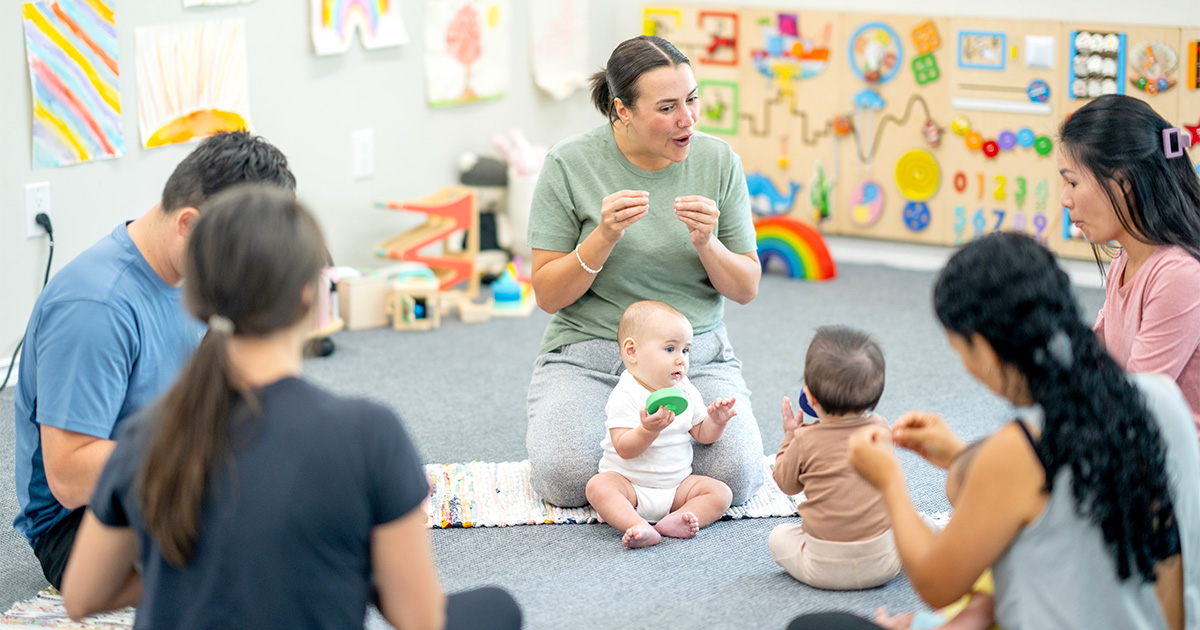- 877.861.5078
- Schedule a Tour

At Learning Care Group, we know communication starts long before a child’s first words. That’s why our infant classrooms incorporate American Sign Language (ASL) as part of our daily routines. This turns gesturing into meaningful conversations! Whether we’re reading a favorite book, exploring bubbles, or playing with soft toys, teachers intentionally model simple signs like more, help, and play. This helps infants begin to understand and express their needs using their bodies. As a result, babies are building confidence in communication, reducing frustration, and forming strong connections with caregivers.
Research supports what we see every day in our classrooms. Signing helps babies focus on language and make sense of the world around them. According to pediatric experts, infants as young as 6 to 8 months can begin using signs to communicate. And those who do often develop stronger language skills later. Studies show that children who learn sign language during infancy score higher on vocabulary and IQ tests and show fewer behavioral struggles, simply because they can express themselves more clearly (HealthyChildren.org, 2023). Even gestures like pointing to a favorite book or using fingers to signal eat are early signs of complex thought and social-emotional awareness.
Families can extend this learning at home by using simple signs throughout daily routines. When offering a drink, say the word while signing drink and repeat the action during mealtime. Make signing fun and consistent. Sing along to your favorite songs while adding motions or pause during story time to see if your baby wants more. And don’t worry if the signs aren’t perfect. Just like speech, the more children practice, the clearer and more confident they become. What matters most is that your child feels seen and heard.
Across our community of schools, we are proud to create classrooms where children’s earliest words, whether spoken or signed, are celebrated and encouraged. Our curriculum nurtures every stage of language and communication development, starting with gestures and growing toward fluent, confident expression. When families and teachers work together to support early communication, we help children build a foundation for lifelong learning and healthy relationships.
Those little hands really are made for talking—and we’re here to listen!
Want to read more about the topic? Click HERE.